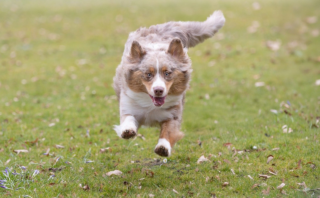Kid-Friendly Guide: 5 Simple Steps to Train Your Dog
Dog ownership is a rewarding experience that teaches children about responsibility, compassion, and long-term commitment. However, it can be a challenging task if the child does not know how to interact with their new furry friend or understand the responsibilities involved

Understanding the Basics of Dog Training
First, it’s important to grasp the fundamentals of dog training before kids start working directly with their pets. The dog’s behavior results from its understanding of its surroundings, which is mainly inspired by rewards and consequences. Dogs aim to increase rewards and reduce unfavorable outcomes. Knowing this is critical when training a dog as it enables your child to use reward-based techniques that have proven efficient.
The Role of Rewards in Dog Training
In reward-based dog training, your child gives a reward to encourage good behavior. The reward can be anything the dog enjoys, often a treat or favorite toy. However, it’s key to remember that dogs also appreciate social rewards, like praise and attention, as well. The more regularly and promptly your kid gives the reward, the quicker the dog will learn. It’s critical to remember that the reward must be linked to the behavior you want to encourage, so you should always reward the dog within seconds of performing the behavior.

Setting Up a Training Schedule
Just like kids need a routine to guide their day and give them a sense of security, dogs also need this kind of structure. By establishing a regular schedule for meals, play, naps, and training, you’ll create an environment that’s conducive to learning for your pet while also helping them develop the discipline they need. Plan short training sessions throughout the day, keeping sessions to a few minutes each at first and gradually increasing as the dog’s concentration improves.
The Importance of Patience and Persistence
Training a dog is not a one-time event but is an ongoing project requiring patience and persistence. It’s normal to experience setbacks, but it’s vital to remain consistent and keep trying.
Frequently Asked Questions
What is the best age for kids to start teaching their dogs?
Most experts recommend starting when the dog is still a puppy, around eight weeks old, and the child is mature enough to handle the responsibility, typically around seven or eight years old.
Can all breeds of dogs be trained by kids?
Yes, but some breeds may be easier than others. Certain breeds are more obedient and eager to please, making them easier to train.
How do we avoid treats becoming an expectations?
In the beginning, frequent treats are acceptable as they’re linked to the learning process. Over time, however, gradually phase out food rewards and replace them with social rewards like praise and petting.
What if the dog isn't responding to training?
Consider professional assistance. Professional dog trainers have experience working with a variety of breeds and temperaments and can provide insight and methods you may not have considered.
Conclusion
Dog training by kids is indeed rewarding and beneficial. It not only brings out a sense of responsibility in children but also helps foster a stronger bond between the child and their pet. The key is to approach the process with patience and persistence, and above all else, make sure it’s a pleasurable experience for both the child and the dog. Get ready for a life-changing adventure with your child and their best friend!



